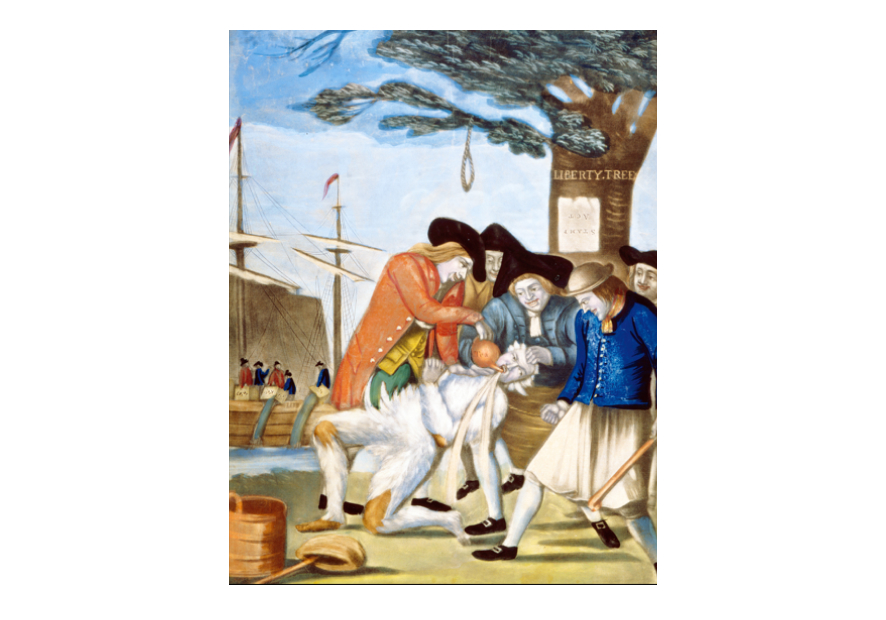
Research & Outcomes
TimeSnap Research Study Overview
TimeSnap is an interactive experience created under a Phase II Small Business Innovation Research (SBIR) grant administered by the US Department of Education s Institute for Education Sciences (IES). Originally created for VR, TimeSnap supplements traditional history teaching by giving students an immersive deep dive into a historical period and problem, and giving teachers curricular supports for deepening students understanding through discussion, writing and further study.
Between December 2019 and February 2020, EDC s Center for Children and Technology conducted a classroom study of the TimeSnap VR interactive with 101 students in 6 classrooms. Students in the treatment classes (n=55) played the TimeSnap interactive on the Boston Massacre then completed related classroom activities. Students in the comparison classes (n=46) conducted a traditional document-based lesson on the same topic.
This document presents top-level findings from EDC s classroom study. Download the
full study for more detailed description of the study s methods and results.
Summary of Findings
Students who studied the Boston Massacre using TimeSnap and related classroom materials showed gains in historical knowledge, concepts, and skills compared to their peers who studied the Boston Massacre via traditional paper-based methods. Specifically, three gains are discussed below:
TimeSnap students showed statistically greater gains in historical knowledge of the Boston Massacre, compared to peers in traditional classrooms.
TimeSnap students showed greater grasp of two key concepts—historical causation, and historical perspective—than peers in traditional classrooms.
After using TimeSnap, students displayed stronger document analysis skills when confronted with a novel visual source, particularly in observing visual details, and identifying the author’s viewpoint.
Historical knowledge of the Boston Massacre
The TimeSnap group showed significantly greater change on a 5-item measure of historical knowledge of the Boston Massacre than did the comparison group. All students were administered 5 historical knowledge items (See Figure 2 below) before and after the intervention. A difference of means analysis was performed on the scores (one-sample t-tests of pre-post change scores).
Figure 1 shows that the TimeSnap group saw statistically significant pre-post change on items 2, 3, 4 and 5. No statistically significant pre-post change emerged for the comparison group. The mean change score for the TimeSnap group was .19 compared to .04 for the comparison group (t=-2.7, p<.01). The Cohen’s d value is .54, which indicates a medium effect size.

Grasp of Historical Thinking: Multicausality & Historical Perspective
In addition to content knowledge, TimeSnap students showed significant improvement on two pre-post items measuring historical thinking. Comparison students showed no improvement on these items. Figure 2 below shows pre-post changes in the number of TimeSnap students who agreed or disagreed on a four-point scale with two statements:
QUESTION 1: Important events in history typically have a single cause.
QUESTION 4: When eye-witnesses see the same event, they generally agree on what happened.
Before using TimeSnap, students were more likely to agree with Q1, saying that historical events tend to have a single cause. After TimeSnap, students were more likely to disagree with the statement—suggesting they now had a more multi-causal view of historical events.

Similarly, before using TimeSnap students were more likely to agree that “when eyewitnesses see the same event, they tend to agree on what happened,” while afterward more of them disagreed with this statement (Q4). These data are consistent with the idea that using TimeSnap gave students a deeper appreciation of the different viewpoints and perspectives that people, including eyewitnesses, bring to historical events.
Stronger Document Analysis Skills
Finally, students using TimeSnap out-performed comparison students on a document analysis task, in ways that suggest the VR app and classroom lessons may be effective in building student document analysis skills, such as closely observing details and using these details to infer the author’s viewpoint or perspective. Post-test Document Analysis Task. The post-test asked all students to analyze the following version of a 1774 engraving, Bostonians Paying The Excise Man, or Tarring and Feathering (Figure 3). Students responded to four prompts that asked them to:
- Observe the document and note important details (open-ended)
- Identify who the author felt sympathy toward—the colonial protesters or the tax collector (multiple choice)
- Indicate whether the print represents a Patriot or a Loyalist perspective on colonial protest (multiple choice)
- Explain and support their analysis using reasoning and evidence (open-ended)

Researchers analyzed and coded student responses on each element of the task. Figure 4 presents a summary of student performance across the elements.

As summarized in Figure 4, TimeSnap students performed better than comparison students on all four main elements of the document analysis task—observing visual details, identifying the author’s sympathies, interpreting the author’s perspective on colonial protests, and linking the details together in a cogent, well-supported interpretation of the author’s motives.